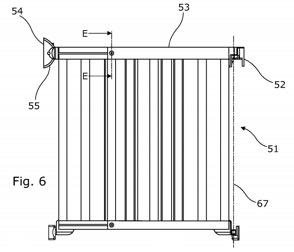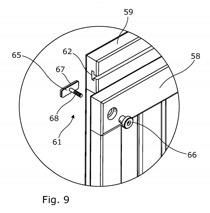Safety gates provide a temporary barrier, which can help to prevent toddlers and young children accessing a flight of stairs or other area. They often have a child-proof latch, so they can be opened and closed by an adult, whilst still providing an effective barrier to young children.
Despite being used for decades and gaining recognition as the go-to device for parents looking to make their stairs safer, Mothercare has recently patented a new invention, which could improve their performance. This invention is described in granted UK patent, GB 2499231.
From one home to another, flights of stairs can vary widely in terms of both size and configuration. As a result, a safety gate must be adaptable to fit any given opening. This is usually achieved by a threaded or telescopic component, at one or both sides of the gate that can be extended or retracted to fit the gate in place. This can often be unstable, particularly when fully extended, and so could itself present a safety hazard for young children.
As shown in the accompanying drawings taken from the published patent, Mothercare’s design includes two fixings (52, 54), which are securely fastened at either side of the top or bottom of a flight of stairs. A gate (53) is attached to one of the fixings (52) and is latched closed via the second fixing (54).To improve safety, there is also a locking mechanism (55) to secure the gate in place.
The gate itself is formed of two parts, which are coupled via a telescopic mechanism; enabling the gate (53) to extend or retract to span an opening. The gate is secured at the correct width by a fixing mechanism. This includes a T-shaped groove (62) in one part of the gate and a corresponding "captive part" (65) in the other. The head (67) of the captive part (65) slides in the groove (67) as the width of the gate is adjusted.By simply tightening a nut (66), the captive part draws the two parts of the gate together; clamping them in place.
Importantly, this fixing mechanism is designed so that the two parts of the gate can be fixed together at any point over a continuous range. Therefore, the width of the gate can be adjusted to fit any opening.
Although this is a relatively simple invention, it provides a clear benefit over previous stair gates and this has enabled Mothercare to obtain patent protection.It also shows that an invention does not have to be technically complex to achieve patent protection. It is often the case that a simple invention is the most effective.
Another point that this case highlights is that there is nearly always room for improvement – even with a product that had been tried and tested over many years.A simple modification could make all the difference.







